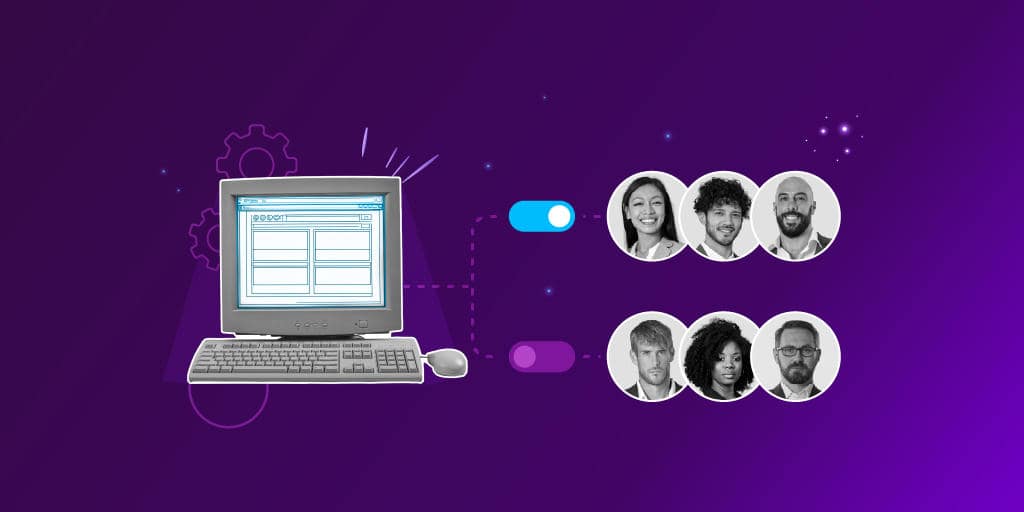Quick Overview
Feature flags (also called feature toggles) are basically a switch in your code that lets you turn a specific feature on or off without deploying new code. It’s simple in theory, but incredibly effective when done right. You wrap a block of code with a condition. If the flag is on, that code runs. If it’s off, it doesn’t. That’s it.
If you’re releasing software regularly, you’ve probably heard of them, maybe even used them. I have, and I’ll tell you upfront: they’ve saved me more than once.
Why I started using feature flags
A few years ago, I was working on a product team that pushed updates weekly. One week, we introduced a new notification system. Everything worked in staging. QA passed it. We rolled it out, and suddenly we were drowning in bug reports. The feature was clashing with a legacy component in production. We had no quick way to pull it back. That deployment cost us hours.
After that mess, we started using feature flags for every user-facing change. That experience taught us how much control we were missing. Once we started using feature flags, we realized just how many things they made possible.
What you can actually do with them
Feature flags let you:
Test new features in production without showing them to users
Roll out changes gradually (like to 5% of users first)
Turn off a feature instantly if something breaks
Separate deployment from release
This last one is huge. You can ship code anytime, but choose when to activate it. That reduces stress during releases. You don’t need everyone online “just in case.”
The ability to decouple code delivery from exposure is what makes flags so flexible. It turns shipping into a background task and gives your team breathing room to make better decisions later in the process.
How feature flags work
Behind the scenes, feature flags are built around three parts: flag definition, evaluation logic, and targeting.
The flag definition is usually stored in a config file, database, or external service. It includes the flag name, a default value, and sometimes metadata like who owns the flag or when it should be reviewed.
The evaluation logic checks whether the flag should be active in a given context. That could mean checking the environment (dev, QA, prod), the user type (admin, internal tester, customer), or something more dynamic, like the user’s region or usage pattern.
And then there’s targeting. This is where flags become powerful. You can make them conditional on environments and on user segments. That way, you can say: “Show this new homepage only to 10% of users in Canada,” or “Enable this analytics change only for our internal team.”
If you are building a system from scratch or using a platform like Flagsmith or Unleash, the core mechanics are the same. But how you apply them shapes how much value you get from them.
More than one kind of feature flag
Not all flags are created for the same purpose. The more we used them, the more we started thinking in types.
Release flags are the most common. You wrap features in them so you can deploy code and activate the feature later. Facebook uses these constantly. They ship code to production every day and use flags to control when features become visible to users.
Experiment flags are used for testing different versions of a feature. You want to compare behavior, adoption, or performance between two UI layouts or backend algorithms. Netflix runs hundreds of experiments this way every year. They can see what resonates with real users, then roll it out only when the data supports the decision.
Operational flags are there to control internal behavior. Things like throttling, cache toggling, or logging levels. They help DevOps and engineering teams manage infrastructure more flexibly.
Permission flags give access to features based on user roles or accounts. That’s helpful when you want to run an early access program, test a feature with selected customers, or give product managers a preview of something before it’s generally available.
And then there are kill switches. These are flags designed to disable something quickly, even automatically, based on metrics. If errors go above a certain threshold, the flag flips. That’s how teams at Slack and Google keep availability high while testing things in production.
The concept is the same. The use cases are endless.
Best Practices for Implementation and Lifecycle Management
What to watch for when using flags
The most common challenge is forgetting to remove them. Every flag adds logic to your codebase. You need to track them; otherwise, they build up. We created a cleanup board in Jira, and any flags older than three sprints got reviewed.
Another thing we watched for: silent flags. Active flags, but no one knows what they do anymore. A simple fix is visibility. We built a small internal dashboard that showed all flags, their status, who owned them, and when they were last touched.
Flags also need coordination. QA needs to know what’s behind a flag. Product needs to understand what’s live, what’s hidden, and what’s being tested. Keeping everyone informed made a big difference.
What else to keep in mind
There are a few other things worth considering when working with flags, especially as they scale.
First, be mindful of where your flags live. Server-side flags are great for keeping control and avoiding exposure. But client-side flags can reveal more than you’d like — if you’re hiding unfinished logic or sensitive functionality, it’s better to keep that decision on the server. Treat flags like code: review them, log them, and never assume they’re invisible.
Second, pick the tooling that fits your team. If you’re just getting started, a config file might work. But as things grow, tools like LaunchDarkly, Flagsmith, or Unleash make it easier to manage targeting, metrics, and cleanups. We used to debate whether to build or buy. In the end, we realized that flag tooling becomes part of your release infrastructure, and infrastructure deserves support.
As the number of flags grows, governance becomes essential. We created a simple registry that tracks each flag’s name, owner, and expiration date. Some teams even set automated reviews after 30 days. It doesn’t need to be fancy, just consistent. That helps avoid “ghost flags” hiding in your codebase.
Feature flags are also helpful long before production. In staging and testing environments, they let you simulate different feature states and test edge cases without needing different builds. That’s something our QA team appreciated, especially for validating tricky feature combinations.
And once a flag is live, measuring impact is key. We tracked things like error rates, conversion, and page performance with flags toggled on or off. It helped us decide if a feature was ready to roll out wider or if we needed to pause and investigate.
Finally, don’t underestimate what a bad flag setup can do. We once had one flag used in over ten places, without clear ownership, without a cleanup plan. No one wanted to touch it. That one flag slowed down multiple releases just because it wasn’t designed with a lifecycle in mind. Lesson learned: flags are powerful, but only when handled with care.
How feature flags fit into CI/CD and DevOps
Once we moved toward continuous delivery, feature flags became even more important.
We shipped flagged code as soon as the PR was merged, but features stayed off until we flipped the flag. That gave product teams control and let QA test both states without redeploying.
Flags were tied to our observability tools, so if something broke, we could trace it fast and turn the feature off, no rollback needed.
We used the same build across all environments, just with different flag settings. QA saw what was next while production stayed stable.
Over time, flags became part of our incident playbook, logged, reviewed, and treated with the same care as code.
Real teams using feature flags every day
Facebook is known for its “dark launches.” Features are deployed long before they’re activated. That way, internal users can test, feedback can be collected, and no user is ever exposed to unfinished functionality.
Netflix uses flags to power experimentation at scale. They can test variations of a feature across millions of users, then turn off the less effective version with a single decision. It helps them personalize the experience without risking performance.
Google and LinkedIn use flags to manage large infrastructure changes across multiple environments. Slack uses them for permission-based access and internal testing. Even smaller SaaS teams rely on them to run staged releases or regional pilots.
It’s a simple tool that scales well. And it adapts to the maturity of your release process.
Feature Flags in Test Environment Management
Wrapping it up
Feature flags are simple in concept but powerful in practice. They help teams ship with more control, test in production, and release without pressure. When used intentionally with clear ownership, cleanup plans, and the right tooling, they turn complex deployments into reliable and safer releases.
Used well, flags bring flexibility. They let you move fast and stay in control.
Key Takeaways
- Use feature flags intentionally.
- Set clear rules. Define naming, ownership, and logging from the start.
- Clean up often. Remove old flags to keep your codebase tidy.
- Make flags part of your process. Include them in CI/CD and testing.
- Watch how they behave. Monitor impact and flag service health.
- Pick tools that fit. Use what works for your team’s size and needs.
- Keep logic secure. Always protect sensitive flags on the server side.





